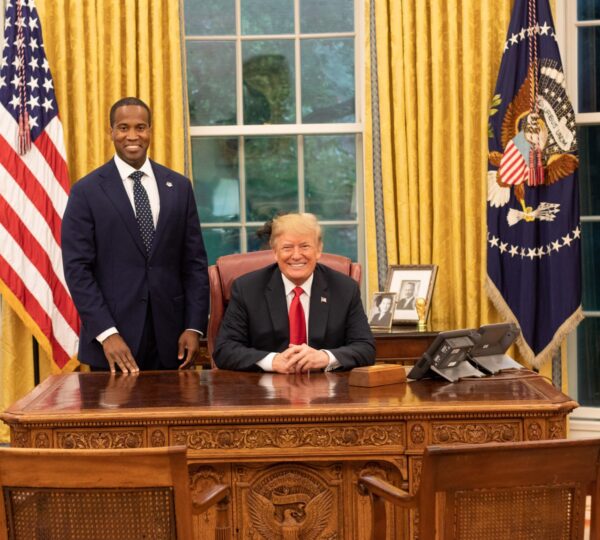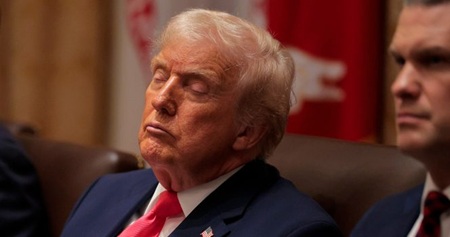Trump’s Big Move: Pushing to End the Filibuster Amid the Government Shutdown
by admin ·
President Donald Trump is raising the stakes in Washington as the ongoing federal government shutdown drags on into what could be the longest halt in U.S. history. He has turned his focus to a longstanding Senate procedure, demanding the elimination of the filibuster as the path forward.
The shutdown, now entering its 30s day, has triggered disruptions across government services, leaving federal employees unpaid, programs stalled and public frustration mounting. In this fraught environment, Trump has made a bold push: scrap the 60‑vote requirement in the United States Senate, and let the majority party act unencumbered.
During a breakfast meeting at the White House with Republican senators, Trump reportedly challenged party leaders, saying that unless they remove the filibuster, the GOP risks becoming “a dead party” unable to enact its agenda.

The filibuster is a Senate rule requiring 60 votes to bring most legislation to the floor. Republicans currently hold a 53‑seat majority — meaning the rule effectively gives the minority party a blockade power.
Trump argues that the rule is the reason the government remains shut down, and that eliminating it would allow Republicans to reopen the government swiftly and advance conservative priorities with a simple majority.
Despite his urgings, Senate Republican leaders remain skeptical. John Thune, Majority Leader, and other GOP senators say they do not currently support scrapping the filibuster, citing its institutional importance.
Speaker of the House Mike Johnson also defended the rule, calling it a “safeguard in the Senate” even while acknowledging the intra‑party tensions.
What makes this confrontation especially significant is its timing. The shutdown has persisted for so long that public concern has grown intense, and Trump is using the moment to frame a broader battle over legislative power and Republican identity.
For many Republicans, the filibuster is not just procedure — it is a protection. They argue that removing it would expose GOP legislative efforts to Democratic majorities if the party were to lose power.
Meanwhile, Democrats are watching closely. Some view the push as a sign of desperation from Republicans and are poised to use it as a campaign issue in upcoming elections. Trump, however, dismisses such concerns, arguing the GOP must move boldly now.
Analysts say the drama underscores a deeper question: whether the Senate should maintain its long‑held rules that encourage cross‑party negotiation, or whether majorities should be able to legislate unimpeded.
For federal employees and citizens impacted by the shutdown, the procedural debate may appear abstract. But for Trump and his allies, the rule is more than procedural—it stands between policy implementation and legislative gridlock.
Republican leaders argue the filibuster keeps legislation stable and prevents rapid swings with each election. Without it, they say, the opposition would have no effective check if power shifts.
Despite the push, the immediate outcome remains uncertain. Republicans don’t currently have sufficient numbers in the Senate to change the rule, and internal resistance is strong.
The public has lost patience. Many Americans blame Congress for the shutdown and see procedural fights as detached from real‑world impact. Trump is betting that bold action will reframe the narrative and rally support for the party.
If Republicans follow his lead and remove the filibuster, they open the door to sweeping legislative changes—but also to significant backlash if power shifts. It’s a high‑risk, high‑reward strategy in a fraught moment.
Until now, the filibuster has been a cornerstone of Senate operations, used by both parties to protect minority rights. The shift Trump is suggesting would reshape the Senate’s structure and norms.
Whether this latest confrontation will lead to a breakthrough or deepen the stalemate is unclear. But one thing is certain: the pressure on the GOP and the Senate has rarely been this intense.
As the shutdown continues, and impacts mount on federal workers, government programs and public trust, the procedural fight becomes part of the political and human cost.
Trump’s message is simple: “End it now, or we’ll never fix America.” Whether Republicans will heed that call remains to be seen.
In the coming weeks, all eyes will be on the Senate floor and on GOP leaders to see if they will accept Trump’s challenge—or resist him and preserve the rule. Either decision will have long‑term implications for how the U.S. Congress operates.
For voters, the moment serves as a reminder that rules and procedure are more than technicalities—they can determine which policies pass, which fail, and who holds power.
In the end, the filibuster fight might be the defining confrontation of this Congress, shaping how legislation is made, how majorities govern, and how minority voices are protected.
One thing remains clear: the Senate stands at a crossroads, and the choices made now will reverberate for years to come.

